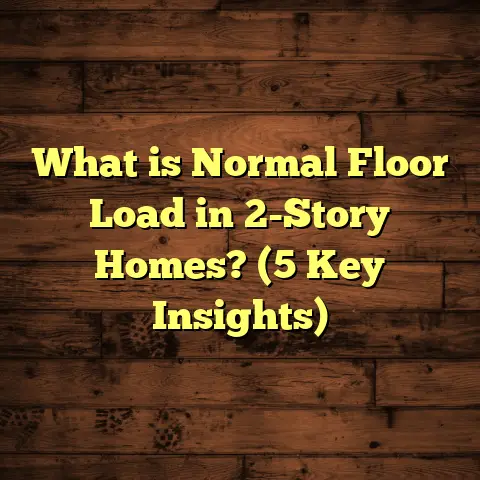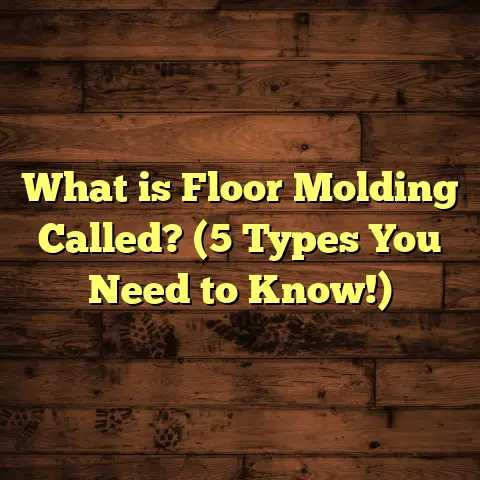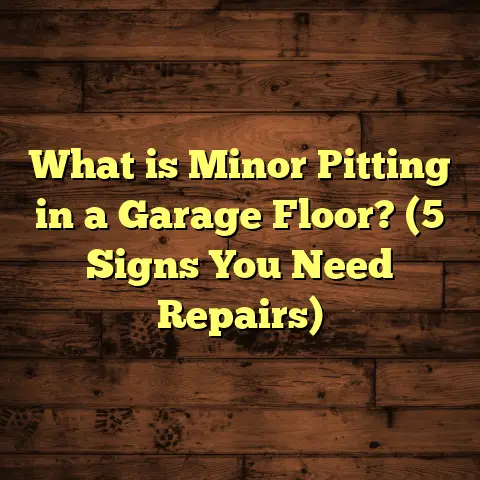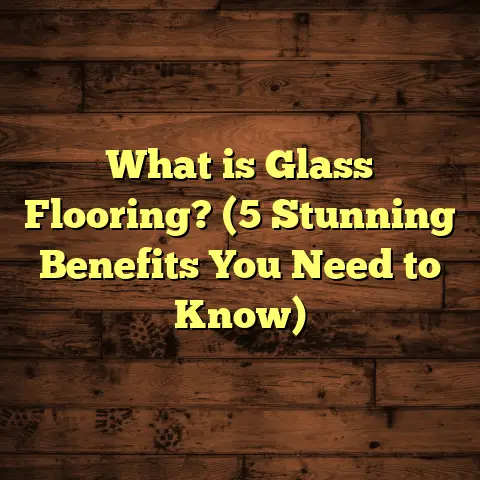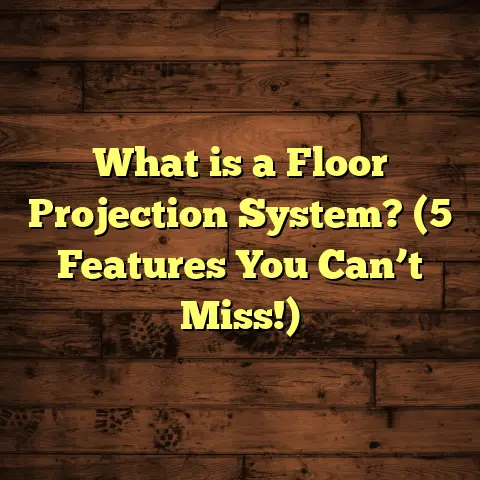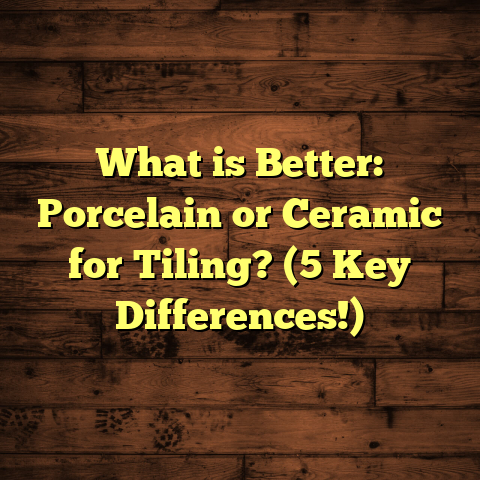What Is Parquet Vinyl Flooring? (5 Reasons It’s In Demand)
Did you know that vinyl flooring sales in the U.S. have jumped by over 35% in the last five years? That kind of growth is impressive by any standard. A big driver behind this surge is a specific style that’s been catching homeowners’ and designers’ eyes alike—parquet vinyl flooring. If you’ve been curious about what parquet vinyl is, why it’s suddenly everywhere, or if it’s right for your space, I’m here to share everything I’ve learned from years of hands-on work and research.
I’ll walk you through what parquet vinyl flooring is, why it’s gaining so much popularity, and share some real-life insights and data to help you make an informed choice. Whether you’re a homeowner thinking of upgrading your floors, a renter considering flooring options, or someone just passionate about interior design, this article will offer value.
What Is Parquet Vinyl Flooring?
Let me start by breaking it down simply: parquet vinyl flooring is vinyl flooring designed to replicate the classic parquet wood floor patterns.
If you haven’t come across “parquet” before, it refers to a style of flooring made up of small wooden pieces arranged in intricate geometric patterns. Think of squares, herringbone, or basketweave designs that create a decorative, elegant wood floor look.
Traditionally, parquet floors are made of solid hardwood pieces glued or nailed to the subfloor. They’re beautiful but can be expensive, prone to damage from moisture, and require regular maintenance.
Now, parquet vinyl flooring takes that traditional wood pattern and brings it into the world of vinyl. Vinyl planks or tiles are printed with detailed wood grain patterns and textures designed to mimic the appearance of real parquet wood floors. These vinyl floors come with a durable wear layer that protects against scratches, stains, and moisture.
They’re typically made from multiple layers:
- A backing layer for stability
- A core layer for strength and flexibility
- A printed vinyl layer with the wood design
- A protective wear layer on top
Because of this layered construction, parquet vinyl floors are much more resistant to water and wear compared to real wood.
I remember the first time I installed parquet vinyl flooring for a client who adored traditional parquet wood but had young kids and pets. She was worried about scratches and spills ruining her floors, but after seeing the vinyl option, she was convinced. It gave her the elegant look she wanted with almost zero maintenance hassles.
How Parquet Vinyl Differs from Traditional Parquet Wood
You might be wondering: “How close can vinyl really get to the feel and look of real wood parquet?”
Good question. While nothing beats solid wood for authenticity, vinyl has come a long way in replicating natural textures and colors. The printed designs are now so realistic that from a distance—and even up close—it’s challenging to spot the difference unless you touch the floor.
Beyond appearance, there are important functional differences:
| Feature | Parquet Wood | Parquet Vinyl |
|---|---|---|
| Cost per sq ft | $8 – $15+ | $2 – $5 |
| Installation complexity | High; requires skilled labor | Low; DIY-friendly options |
| Water resistance | Low; prone to warping | High; water-resistant |
| Maintenance | High; refinishing needed | Low; simple cleaning |
| Durability | Medium; scratches/dents | High; scratch & stain resistant |
| Longevity | 20+ years with care | 10-20 years depending on wear |
This table sums it up nicely. For many people, the trade-off in authenticity is worthwhile given the practical benefits of vinyl.
5 Reasons Parquet Vinyl Flooring Is in Demand
1. Cost-Friendly Elegance
One of the biggest reasons I see people choosing parquet vinyl is its affordability. Real parquet wood floors involve expensive timber plus skilled labor to install properly. This can add up quickly.
I recently helped a family renovate their living room and kitchen. They loved the charm of parquet but had a tight budget. By choosing parquet vinyl instead of traditional wood, they saved thousands without sacrificing style.
To give you numbers:
- Hardwood parquet installation often costs $12 per sq ft on average.
- Parquet vinyl installation can be done for around $3 per sq ft or less.
That’s roughly 75% savings!
This affordability means more homeowners can enjoy that classic wood pattern look without breaking the bank. It also opens options for rental units or commercial spaces where budgets are tighter but design matters.
2. Durability That Stands Up to Life
I’ve seen firsthand how well parquet vinyl holds up in busy homes. One client who owns a daycare center needed flooring that could withstand constant foot traffic, spills, and even little feet running around all day. She chose parquet vinyl for its toughness—and it paid off.
Vinyl’s wear layer protects against scratches and dents far better than traditional wood floors. It’s also water-resistant or even waterproof in many cases, which prevents warping or mold problems common with wood in humid areas.
According to a recent report from Flooring Today magazine:
Vinyl plank flooring has a wear layer abrasion resistance rating 50% higher than hardwood finishes in high-traffic environments.
That stat really caught my eye because durability is often the deciding factor for families or businesses considering flooring options.
3. Quick and Easy Installation
If you’re like me and appreciate saving time (and money!) on home projects, parquet vinyl’s installation process will appeal to you.
Real parquet floors require precise cutting and fitting of small wood blocks—a very labor-intensive process often taking days or weeks depending on room size.
Parquet vinyl usually comes as click-lock planks or peel-and-stick tiles. This design allows for fast “floating floor” installation over existing surfaces without glue or nails in many cases.
I remember helping my friend redo her home office floor over a weekend using parquet vinyl planks. We finished the entire room in two days with just basic tools. No specialized skills required.
Since labor costs are often a significant part of flooring expenses (sometimes up to 50%), faster installation reduces overall project costs.
4. Minimal Maintenance Hassles
Who wants to spend hours polishing or refinishing floors regularly? Not me!
Parquet hardwood floors require upkeep like sanding and resealing every few years to maintain their look and protect against damage. Plus, you have to be careful about what cleaners you use.
With parquet vinyl, maintenance couldn’t be simpler: sweep or vacuum regularly to remove dirt, mop with a damp cloth when needed, and avoid harsh chemicals.
One client with a busy café picked parquet vinyl because wiping up spills quickly during rush hours was crucial without worrying about staining or damaging the floor.
The ease of maintenance is a big selling point for busy families, pet owners, or commercial spaces with heavy use.
5. Variety of Designs That Fit Any Style
Another reason I’m excited about parquet vinyl is how many options are available today.
You can choose from traditional oak or walnut looks with warm tones, modern grayish hues for contemporary spaces, or even exotic woods like teak or mahogany—all in one product line.
Manufacturers now offer embossed textures that closely replicate wood grain, knots, and even slight imperfections that add authenticity.
This variety means you’re not limited to just one “wood” look; you can match your flooring perfectly with your décor style whether it’s rustic farmhouse or sleek modern condo.
How I’ve Seen Parquet Vinyl Work Wonders: Personal Stories
I want to share some stories from my experience that show how versatile and effective parquet vinyl flooring can be.
Story #1: The Family With Pets and Kids
A couple I worked with had two energetic dogs and three kids under ten. They loved hardwood floors but were worried about scratches and spills ruining their investment fast.
We installed parquet vinyl in their kitchen and living room. After a year, they told me they were thrilled—no scratches visible even after rough playtimes, easy cleanup after meals, and the floor still looked great.
This family’s case really reinforced how well parquet vinyl fits busy lifestyles where durability and maintenance are concerns but style isn’t negotiable.
Story #2: The Boutique Hotel Renovation
I consulted on a boutique hotel renovation where they wanted luxury aesthetics but budget limitations for common areas like lobbies and hallways.
Choosing real hardwood was out of budget due to large areas needing flooring. Parquet vinyl was selected because it offered the elegant geometric patterns typical of upscale hotels but at a fraction of the cost.
Guests often complimented the floor’s beauty without realizing it wasn’t real wood. The hotel saved roughly 45% on material and installation costs compared to hardwood while enhancing durability under heavy foot traffic.
Story #3: The Home Office Makeover
During the pandemic’s work-from-home shift, many clients wanted stylish yet practical home office floors they could install themselves.
One client chose parquet vinyl planks for easy DIY installation over their existing carpet. It gave their office an instant makeover with professional looks without hiring contractors or waiting weeks for installation.
This example shows how parquet vinyl suits modern lifestyles where flexibility and quick results matter.
Data-Backed Insights on Parquet Vinyl Flooring Benefits
Let me back up some of these points with data from industry sources:
- Water Resistance: According to the Resilient Floor Covering Institute (RFCI), luxury vinyl planks (LVP) including parquet styles resist water penetration up to 95%, reducing risks like warping common in hardwood floors exposed to moisture.
- Scratch Resistance: ASTM International tests show commercial-grade wear layers on vinyl can withstand over 10,000 cycles of abrasion before showing wear signs—about five times more than typical hardwood finishes.
- Sound Absorption: Studies indicate that vinyl flooring reduces noise transmission by approximately 15-20% compared to hardwood – useful in multi-story apartment buildings or offices seeking quieter environments.
- Environmental Impact: Several leading manufacturers now incorporate recycled content into their vinyl flooring products. For example, Armstrong Flooring reports up to 40% recycled material use in their luxury vinyl plank lines, lowering environmental footprint compared to harvesting new wood timber.
These stats highlight why parquet vinyl is not only practical but also increasingly sustainable as technologies advance.
Addressing Common Concerns About Parquet Vinyl Flooring
Even though I’m a big fan of parquet vinyl, I’ve heard some questions from friends and clients that are worth addressing:
Does Parquet Vinyl Feel Like Real Wood Underfoot?
Vinyl has a softer feel than hardwood due to its layered construction but many brands add underlayment or foam backing for additional cushioning. Some people actually prefer this softer feel for comfort when standing long periods.
If you want more warmth underfoot, pairing with an underlayment designed for sound absorption helps replicate that cozy sensation you get from wooden floors.
Can Parquet Vinyl Be Refinished Like Hardwood?
Nope—vinyl cannot be sanded or refinished like wood because it’s made from synthetic materials with printed designs on top. However, its scratch resistance means it usually doesn’t need refinishing during its lifespan.
If damage does occur (like deep gouges), individual planks or tiles can often be replaced without redoing an entire floor.
How Long Does Parquet Vinyl Last?
High-quality parquet vinyl can last anywhere from 10 to 20 years depending on traffic levels and care. This lifespan rivals many engineered hardwoods but at a lower upfront cost.
Regular cleaning keeps the wear layer intact longer and prevents buildup that could dull appearance over time.
Installation Tips from Years on the Job
If you’re thinking about installing parquet vinyl yourself or supervising contractors, here are some tips I’ve picked up:
- Acclimate Your Flooring: Let planks sit in your home for 48 hours before installation so they adjust to temperature/humidity changes.
- Prepare Subfloor: Ensure subfloor is clean, dry, flat, and free from debris for best adhesion if using peel-and-stick tiles.
- Use Proper Tools: For click-lock plank installation, use a tapping block and pull bar for tight seams.
- Plan Pattern Layout: Especially important for parquet styles—lay out your pattern beforehand so cuts fall where least visible.
- Leave Expansion Gap: Like wood floors, leave about 1/4 inch gap around perimeter for expansion/contraction.
- Follow Manufacturer Instructions: Every product varies slightly—adhesive type, wear layer thickness—so always check specific guidelines.
Following these steps leads to smooth installations that maximize longevity and appearance.
Comparing Parquet Vinyl With Other Popular Flooring Options
Here’s how parquet vinyl stacks up against some other common choices:
| Flooring Type | Cost per sq ft | Durability | Maintenance | Installation Ease | Style Variety |
|---|---|---|---|---|---|
| Parquet Vinyl | $2 – $5 | High (water & scratch resistant) | Low (easy cleaning) | Easy (DIY friendly) | High (many patterns) |
| Solid Hardwood | $8 – $15+ | Medium (scratches easily) | High (refinishing) | Difficult (skilled) | Medium (wood types) |
| Laminate Flooring | $2 – $6 | Medium (less water resistant) | Medium | Easy | Medium |
| Ceramic Tile | $3 – $10 | Very high (hard surface) | Low | Moderate | High |
| Carpet | $3 – $7 | Low (wears quickly) | High (stain removal) | Easy | Medium |
Parquet vinyl sits comfortably between affordability and quality while offering unique design options reminiscent of hardwood parquet patterns—not something you get from laminate or carpet easily.
Final Thoughts on Why You Should Consider Parquet Vinyl Flooring
When I reflect on all I’ve seen and learned about parquet vinyl flooring over the years—from client projects to industry research—it’s clear why this style is booming:
- It offers classic elegance without breaking budgets
- Stands up well in everyday life situations
- Installs quickly saving time & labor costs
- Requires little maintenance making life easier
- Comes in beautiful designs fitting all aesthetics
If you want floors that marry beauty and practicality without compromise—or if you want something easy enough for DIY while looking professionally done—parquet vinyl deserves serious thought.
Are you ready to explore options? Need help picking products or figuring out installation? Just ask—I’m happy to share tips based on your space specifics and goals!
Thank you for spending time with me on this topic! Whether you’re planning your next renovation or just curious about modern flooring trends, I hope these insights help guide your choices confidently when it comes to parquet vinyl flooring.
(End of article.)
